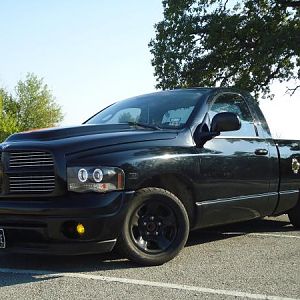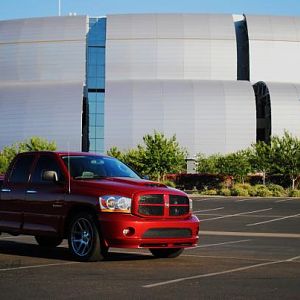The cylinder head is the most important component for producing power in a high performance engine and the decisive factor for determining the maximum performance capability of an engine.
Cylinder heads are also the most complicated engine components to properly modify for efficient performance increases and, usually, the most expensive to purchase and upgrade.
Since the cylinder head is vital to engine performance, and a costly proposition for an engine upgrade, a comprehensive understanding of cylinder heads can assist in making good choices about the options that are available.
The performance value of cylinder heads is evident with a thorough understanding of how a high performance engine functions. Since a high performance engine operates as an internal combustion engine, which produces power by combusting air and fuel, the volume of air and fuel that is consumed directly determines the amount of power produced.
Basic Functions
The cylinder head performs three basic functions that affect power production and engine acceleration. The intake ports flow air and fuel into the cylinder, the combustion chamber promotes the combustion process within the cylinder and the exhaust port allows the exhaust to exit the cylinder.
When the intake and exhaust valves are closed, the cylinder head becomes the primary restriction for airflow in the engine. Since the intake and exhaust valves in the cylinder head create the biggest restriction for airflow when closed, modifications are necessary to improve the movement of air, fuel and exhaust through the cylinders and ports when the valves are open.
Power Production Science
The more air and fuel that flows in and out of each cylinder, and the faster and more efficiently the air & fuel mixture burns, the greater the potential for engine power production.
The most important objective for increasing power output is making modifications that improve combustion. Since the combustion process determines power production, creating a more volatile rate of combustion by increasing air/fuel mixture volume produces additional power. The efficiency of the combustion process by way of a faster burn also helps to promote better combustion efficiency. The fast burn rate creates combustion pressure on the top of the piston, at a greater rate of speed, which results in an increase in power production and a faster rate of engine acceleration.
Improving airflow can be achieved by reducing restrictions in the intake and exhaust passages that enter and exit the cylinders.
Intake and Exhaust Valves
The intake and exhaust valves open and close to allow airflow to enter and exit the engine. The size and shape of intake and exhaust valves have a significant impact on airflow and power production. In addition, the valve seat angles in the valve job and valve angles on the valves also have a very significant impact on airflow and engine performance.
Technically, air and fuel cannot flow straight from the intake port directly into the cylinder, and the exhaust gases cannot flow straight out from the cylinder directly into the exhaust port. Fundamentally, air, fuel and exhaust must move around the valve to get in and out of the cylinder. The effective and efficient movement of air around the valves is what promotes better airflow and improves power and performance.
Port Shape versus Port Volume
The shape of the intake and exhaust ports is more important than size. It is the shape of the intake and exhaust ports and the shape of the combustion chamber that helps to flow air, fuel and exhaust around the valves.
It is often believed that just making intake and exhaust port passages larger is the method to use for increasing airflow. This is simplistic thinking, as bigger is not always better. In this case, the correct shape is more important than size. Making an intake or exhaust port bigger, just to increase the size of the flow path does not always contribute to moving more air around the valves and into, or out of, the cylinder. Increasing port volume by removing material can actually decrease airflow and efficiency when material is removed from the wrong area, thereby creating an inefficient flow path. A properly sized port, with the right shape to promote efficient airflow around the valve, is best.
The relationship of port shape and increasing airflow around the valve, dictates that the more valve area used to flow air, the better the results of cylinder filling. This means that a port shape must be configured to flow more air around the entire diameter of the valve. This is why shaping a port to flow in a specific direction is more important than simply removing material to increase port size. A larger port configuration does not necessarily help to direct airflow around the valve, but a port designed to move air around the entire radius of the valve can flow more air and thereby increase power and performance.
Air speed is another item that requires consideration. The bigger the port, or more specifically, the wider the port, the slower the air moves. To illustrate this principle, consider what happens when you open a window or door. When either is opened by one or two inches wide, a noisy draft usually occurs. However, when they are fully opened, the noise generally disappears. The noise of the draft, generated by the narrower opening, is the sound of air rushing through, or more appropriately, the airspeed. The louder the noise, the faster the air is moving, and conversely, the quieter the sound, the slower the air speed. A narrower open area creates a faster movement of air, and thereby increases air speed.
Cylinder heads with proportionally larger intake and exhaust port sizes can reduce air speed, resulting in a lower volume of air entering the cylinder before the valve closes. It is the opening and closing process of the valves that requires faster, high velocity airspeed to complete the cylinder filling process before the valves close.
The key to obtaining superior performance is to have the best port volume with the best airspeed, and the best camshaft valve timing events for a specific engine combination.
Proper Cylinder Head Modifications
Understanding why airflow passage modifications require proper shape for increasing flow and improving efficiency is the first step to recognizing the complications associated with cylinder head modifications. Modifying cylinder heads is a highly complex process that requires extensive knowledge, specialized skills, and successful experience.
Improper Cylinder Head Modifications
The wrong cylinder head porting modifications or valve job can reduce airflow, cause turbulence, lower air speed, reduce mixture velocity and thereby decrease the performance of an engine. These are some of the reasons why engines with improper cylinder head modifications do not perform to their potential.
Cylinder Head Flow Rates
Another important area is determining how much flow is required to properly balance the flow relationship between intake ports and exhaust ports for a specific application. The basic formula for intake to exhaust flow, for a naturally aspirated engine is generally understood to be in the 65% to 75% range. However, when an intake manifold is installed, the airflow to the head can drop from 5% to 30% depending on the efficiency of the intake manifold, and when an exhaust header is installed, the exhaust flow can increase. In addition, the intake and exhaust duration of a camshaft can help to increase airflow and help to provide the proper intake to exhaust flow balance. Producing too much exhaust flow for a specific engine application can hurt performance by reducing engine power output.
Cylinder Head Power Production
To fully understand the performance capabilities of cylinder heads, a thorough understanding of the science is essential.
The fundamentals of airflow dictate that the power of an engine is directly determined by the amount of air that is consumed in the engine until combustion occurs.
Air flow is what determines fuel flow, as the volume of air is matched by the volume of fuel for the required air/fuel ratio. Fuel is also suspended and transported to the cylinder by air flow.
Power production depends on the quality of air and fuel flow, as dry air does not flow the same as wet air. Since fuel is denser and heavier than air, fuel flow through the intake port and combustion chamber takes a different direction than air flow alone. Cylinder head porting modifications and valve jobs that improve the quality of wet flow and increase air/fuel mixture velocity are what enhance power production.
Technically, proper cylinder head and intake manifold porting modifications that produce a (1) cfm (cubic feet of air per minute) increase of intake airflow can generate 0.25 horsepower per cylinder. Basically, this means that a one cfm increase in intake airflow can produce an additional two horsepower in a V8 engine. To further this example, a 30 cfm increase in airflow through the intake port can produce more than 60 hp with the right camshaft and compression ratio. Porting modifications that yield over 50 cfm improvement in airflow are possible when serious work is done to the heads and in accordance with the above formula, an increase of 100 horsepower can be attained with the right combination of engine components.
Another method that can be used to consider the power capability of a cylinder head is to determine the airflow of the cylinder head. For example, a cylinder head that flows 260 cfm of air has the potential to produce 100 hp over a head that flows 210 cfm. In addition, based on the two (2) hp per 1 cfm of airflow formula, a cylinder head that flows 260 cfm has the potential to produce 520+ horsepower, if the right combination of engine components is being used.
THE READ FOR SPEED by Ned Erkman
Cylinder heads are also the most complicated engine components to properly modify for efficient performance increases and, usually, the most expensive to purchase and upgrade.
Since the cylinder head is vital to engine performance, and a costly proposition for an engine upgrade, a comprehensive understanding of cylinder heads can assist in making good choices about the options that are available.
The performance value of cylinder heads is evident with a thorough understanding of how a high performance engine functions. Since a high performance engine operates as an internal combustion engine, which produces power by combusting air and fuel, the volume of air and fuel that is consumed directly determines the amount of power produced.
Basic Functions
The cylinder head performs three basic functions that affect power production and engine acceleration. The intake ports flow air and fuel into the cylinder, the combustion chamber promotes the combustion process within the cylinder and the exhaust port allows the exhaust to exit the cylinder.
When the intake and exhaust valves are closed, the cylinder head becomes the primary restriction for airflow in the engine. Since the intake and exhaust valves in the cylinder head create the biggest restriction for airflow when closed, modifications are necessary to improve the movement of air, fuel and exhaust through the cylinders and ports when the valves are open.
Power Production Science
The more air and fuel that flows in and out of each cylinder, and the faster and more efficiently the air & fuel mixture burns, the greater the potential for engine power production.
The most important objective for increasing power output is making modifications that improve combustion. Since the combustion process determines power production, creating a more volatile rate of combustion by increasing air/fuel mixture volume produces additional power. The efficiency of the combustion process by way of a faster burn also helps to promote better combustion efficiency. The fast burn rate creates combustion pressure on the top of the piston, at a greater rate of speed, which results in an increase in power production and a faster rate of engine acceleration.
Improving airflow can be achieved by reducing restrictions in the intake and exhaust passages that enter and exit the cylinders.
Intake and Exhaust Valves
The intake and exhaust valves open and close to allow airflow to enter and exit the engine. The size and shape of intake and exhaust valves have a significant impact on airflow and power production. In addition, the valve seat angles in the valve job and valve angles on the valves also have a very significant impact on airflow and engine performance.
Technically, air and fuel cannot flow straight from the intake port directly into the cylinder, and the exhaust gases cannot flow straight out from the cylinder directly into the exhaust port. Fundamentally, air, fuel and exhaust must move around the valve to get in and out of the cylinder. The effective and efficient movement of air around the valves is what promotes better airflow and improves power and performance.
Port Shape versus Port Volume
The shape of the intake and exhaust ports is more important than size. It is the shape of the intake and exhaust ports and the shape of the combustion chamber that helps to flow air, fuel and exhaust around the valves.
It is often believed that just making intake and exhaust port passages larger is the method to use for increasing airflow. This is simplistic thinking, as bigger is not always better. In this case, the correct shape is more important than size. Making an intake or exhaust port bigger, just to increase the size of the flow path does not always contribute to moving more air around the valves and into, or out of, the cylinder. Increasing port volume by removing material can actually decrease airflow and efficiency when material is removed from the wrong area, thereby creating an inefficient flow path. A properly sized port, with the right shape to promote efficient airflow around the valve, is best.
The relationship of port shape and increasing airflow around the valve, dictates that the more valve area used to flow air, the better the results of cylinder filling. This means that a port shape must be configured to flow more air around the entire diameter of the valve. This is why shaping a port to flow in a specific direction is more important than simply removing material to increase port size. A larger port configuration does not necessarily help to direct airflow around the valve, but a port designed to move air around the entire radius of the valve can flow more air and thereby increase power and performance.
Air speed is another item that requires consideration. The bigger the port, or more specifically, the wider the port, the slower the air moves. To illustrate this principle, consider what happens when you open a window or door. When either is opened by one or two inches wide, a noisy draft usually occurs. However, when they are fully opened, the noise generally disappears. The noise of the draft, generated by the narrower opening, is the sound of air rushing through, or more appropriately, the airspeed. The louder the noise, the faster the air is moving, and conversely, the quieter the sound, the slower the air speed. A narrower open area creates a faster movement of air, and thereby increases air speed.
Cylinder heads with proportionally larger intake and exhaust port sizes can reduce air speed, resulting in a lower volume of air entering the cylinder before the valve closes. It is the opening and closing process of the valves that requires faster, high velocity airspeed to complete the cylinder filling process before the valves close.
The key to obtaining superior performance is to have the best port volume with the best airspeed, and the best camshaft valve timing events for a specific engine combination.
Proper Cylinder Head Modifications
Understanding why airflow passage modifications require proper shape for increasing flow and improving efficiency is the first step to recognizing the complications associated with cylinder head modifications. Modifying cylinder heads is a highly complex process that requires extensive knowledge, specialized skills, and successful experience.
Improper Cylinder Head Modifications
The wrong cylinder head porting modifications or valve job can reduce airflow, cause turbulence, lower air speed, reduce mixture velocity and thereby decrease the performance of an engine. These are some of the reasons why engines with improper cylinder head modifications do not perform to their potential.
Cylinder Head Flow Rates
Another important area is determining how much flow is required to properly balance the flow relationship between intake ports and exhaust ports for a specific application. The basic formula for intake to exhaust flow, for a naturally aspirated engine is generally understood to be in the 65% to 75% range. However, when an intake manifold is installed, the airflow to the head can drop from 5% to 30% depending on the efficiency of the intake manifold, and when an exhaust header is installed, the exhaust flow can increase. In addition, the intake and exhaust duration of a camshaft can help to increase airflow and help to provide the proper intake to exhaust flow balance. Producing too much exhaust flow for a specific engine application can hurt performance by reducing engine power output.
Cylinder Head Power Production
To fully understand the performance capabilities of cylinder heads, a thorough understanding of the science is essential.
The fundamentals of airflow dictate that the power of an engine is directly determined by the amount of air that is consumed in the engine until combustion occurs.
Air flow is what determines fuel flow, as the volume of air is matched by the volume of fuel for the required air/fuel ratio. Fuel is also suspended and transported to the cylinder by air flow.
Power production depends on the quality of air and fuel flow, as dry air does not flow the same as wet air. Since fuel is denser and heavier than air, fuel flow through the intake port and combustion chamber takes a different direction than air flow alone. Cylinder head porting modifications and valve jobs that improve the quality of wet flow and increase air/fuel mixture velocity are what enhance power production.
Technically, proper cylinder head and intake manifold porting modifications that produce a (1) cfm (cubic feet of air per minute) increase of intake airflow can generate 0.25 horsepower per cylinder. Basically, this means that a one cfm increase in intake airflow can produce an additional two horsepower in a V8 engine. To further this example, a 30 cfm increase in airflow through the intake port can produce more than 60 hp with the right camshaft and compression ratio. Porting modifications that yield over 50 cfm improvement in airflow are possible when serious work is done to the heads and in accordance with the above formula, an increase of 100 horsepower can be attained with the right combination of engine components.
Another method that can be used to consider the power capability of a cylinder head is to determine the airflow of the cylinder head. For example, a cylinder head that flows 260 cfm of air has the potential to produce 100 hp over a head that flows 210 cfm. In addition, based on the two (2) hp per 1 cfm of airflow formula, a cylinder head that flows 260 cfm has the potential to produce 520+ horsepower, if the right combination of engine components is being used.
THE READ FOR SPEED by Ned Erkman





